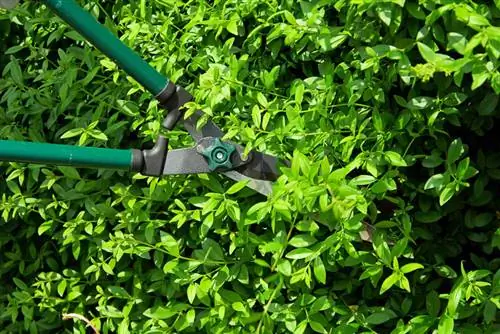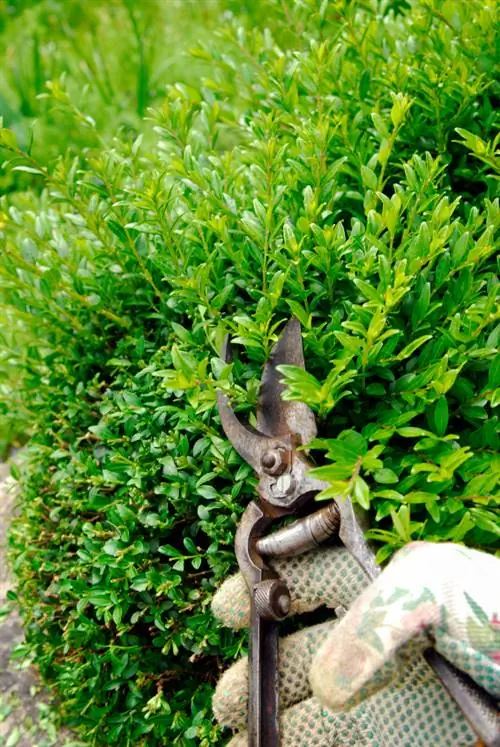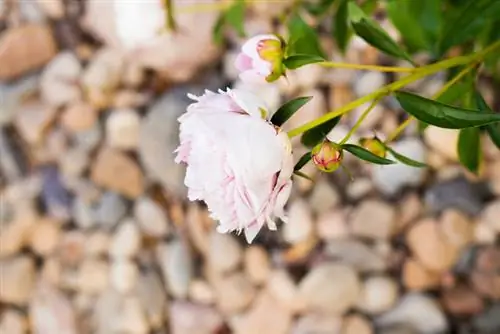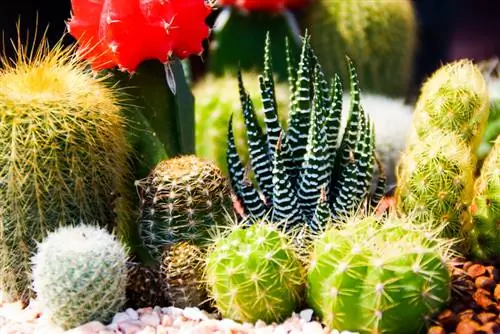- Author admin [email protected].
- Public 2023-12-16 16:46.
- Last modified 2025-06-01 06:02.
If you care for your perennials properly, the plants will usually give you great joy for many years to come. We'll explain to you how you can ensure that the beauty in your perennial bed is constantly doing well.

How do you care for perennials properly?
Perennial care includes regular watering, especially in the first year, fertilizing in spring and, if necessary, in the growth phase, cutting in autumn or spring, loosening the soil and removing spent flowers. Tall perennials should be supported and hardy species protected in winter.
Watering perennials
In the first year after planting, perennials need a little more attention when it comes to watering. Water the plants as needed (more intensively when it is hot/dry, less when it rains).
Once the perennials are established, they are largely self-sufficient and you only need to intervene more during hot periods in the summer. Then it is advisable to water the plants once or twice a week - early in the morning or late in the evening.
Important: Always only water the roots! Be careful not to wet the leaves, otherwise there is a risk of fungal infection.
Fertilize perennials
Adequate nutrient supply is very important for perennials, especially since flowering requires a lot of energy.
- In the spring, work compost (€12.00 on Amazon) or slow-release fertilizer into the soil
- If there are deficiency symptoms or poor flowering, help with fast-acting liquid fertilizer
- Don't give anything from August onwards (otherwise perennials will become more sensitive to cold)
Cutting perennials
Whether you cut your perennials in fall or spring is ultimately up to you. Both variants are compatible with the plants and have their advantages.
Autumn:
- Stems are still tight
- Perennials sprout again in spring (new growth doesn't want to come into contact with the scissors if possible)
Spring:
- many perennials retain attractive fruit heads over the winter (magical decoration for the garden or balcony, especially when covered with hoarfrost or snow)
- dried fruit stalks serve as food for birds and insects
Further care measures
Here we would like to summarize further - perennial-specific - care measures:
- Loose the soil
- Removing faded flowers
Loose the soil
So that the perennials can easily absorb water and nutrients, you should regularly loosen the soil around your plants with a rake. Otherwise the soil will become crusty or muddy.
Attention: Always pierce shallowly to avoid damaging the roots!
Removing faded flowers
It is worth removing wilted flowers before seeds begin to form. Then it is likely that the perennials will reward you with a second flowering.
- Cut perennials back to a hand's width above the ground.
- Add liquid fertilizer (fertilize moderately!).
- Water regularly.
A few weeks later the plants are in bloom again.
Final Notes
- Tall perennials should support you.
- Most perennials are hardy and do not need winter protection. Only some species should be specifically protected from the influences of the cool season.






